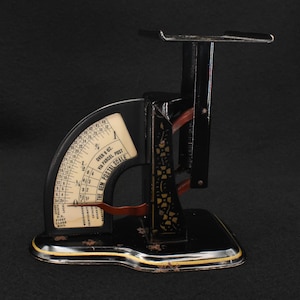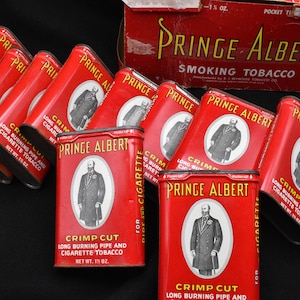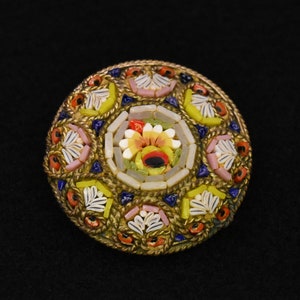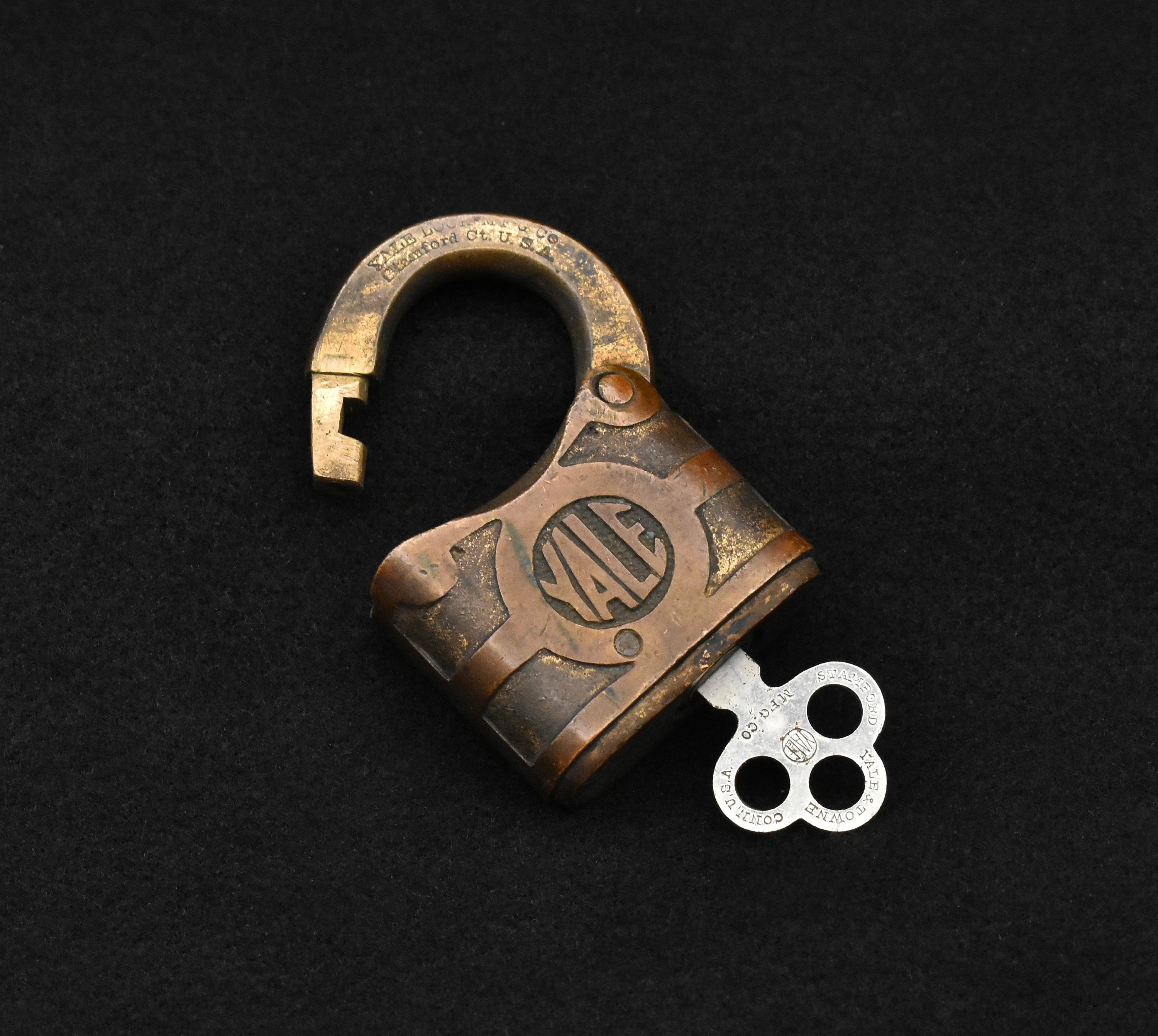
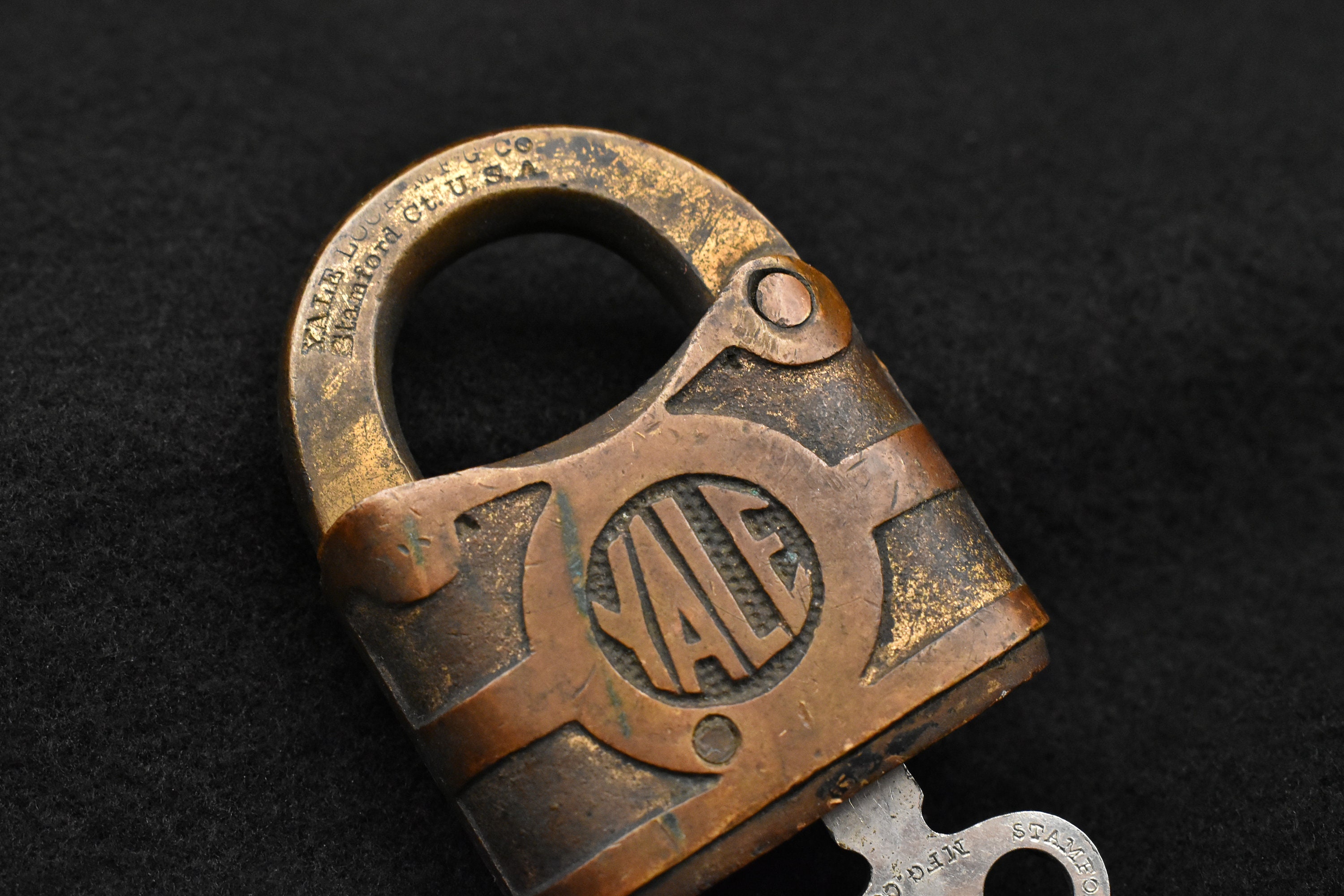

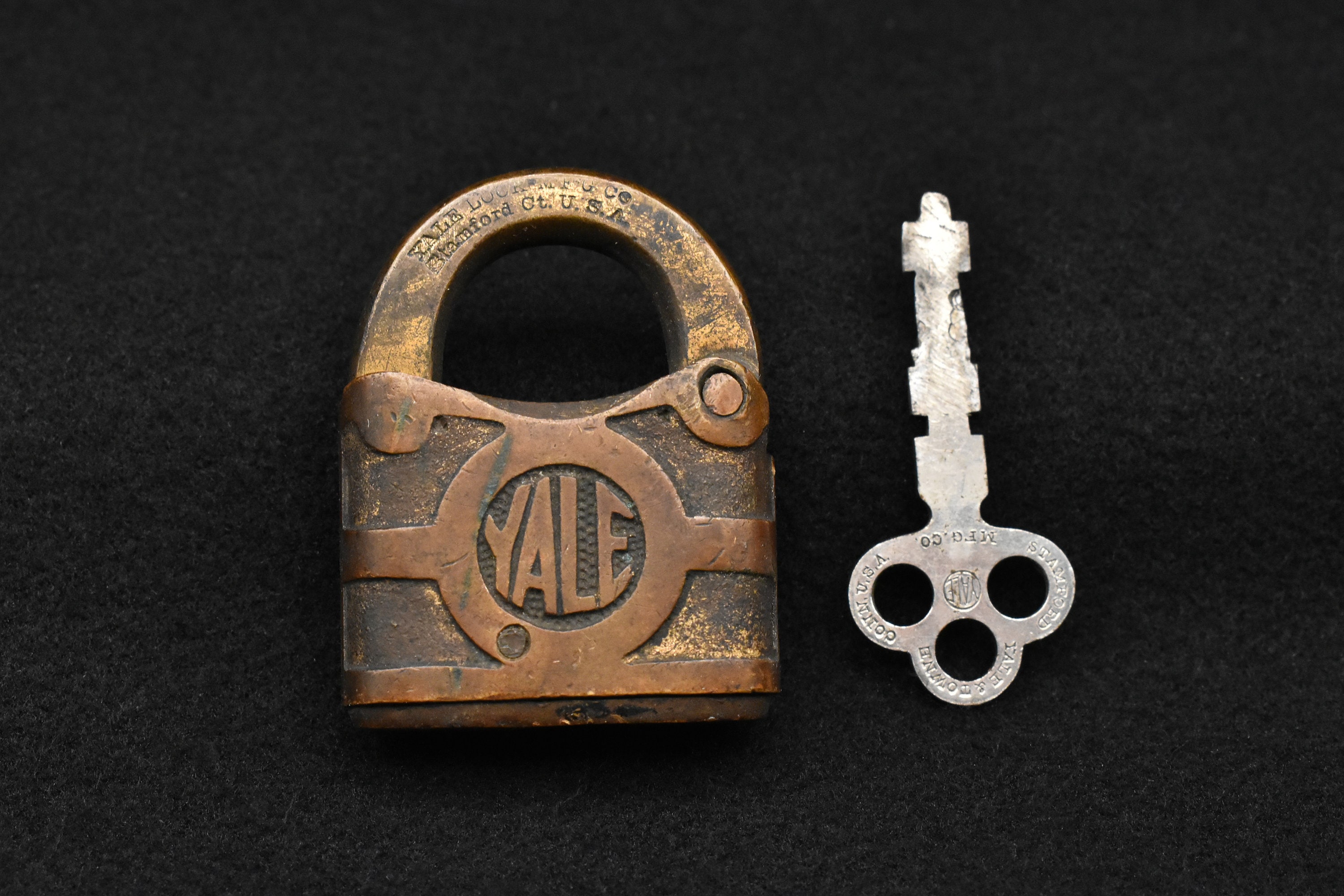

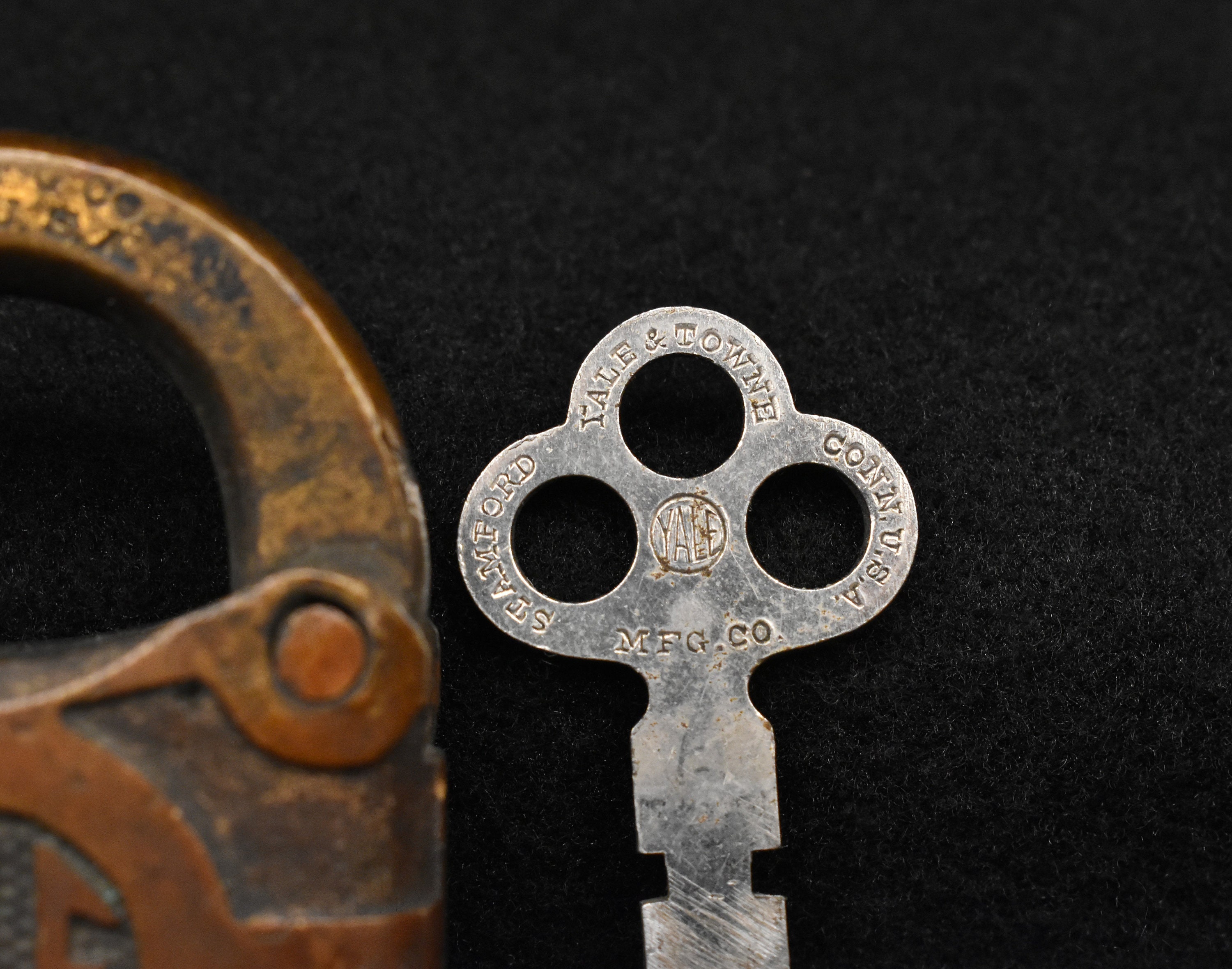
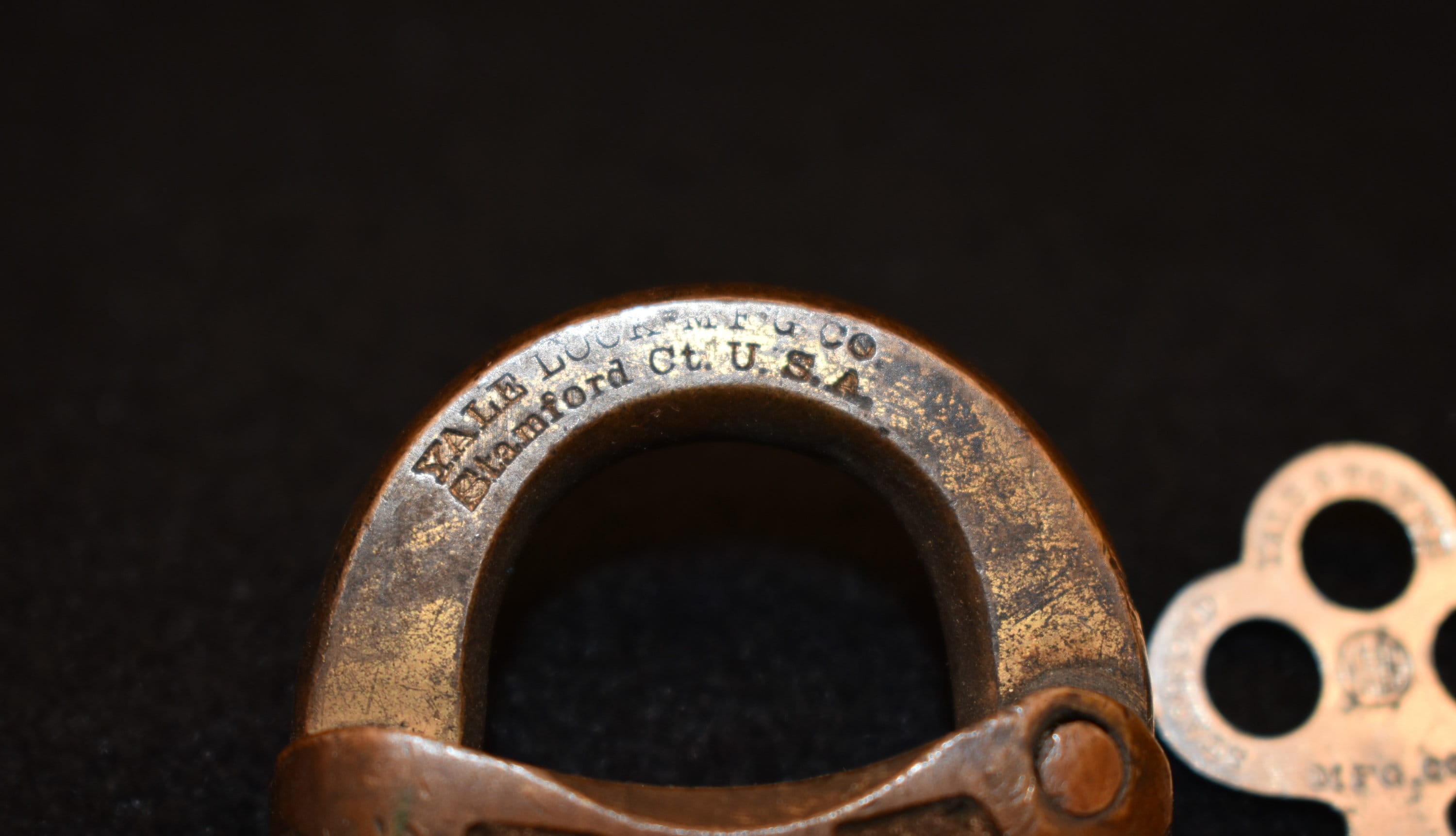
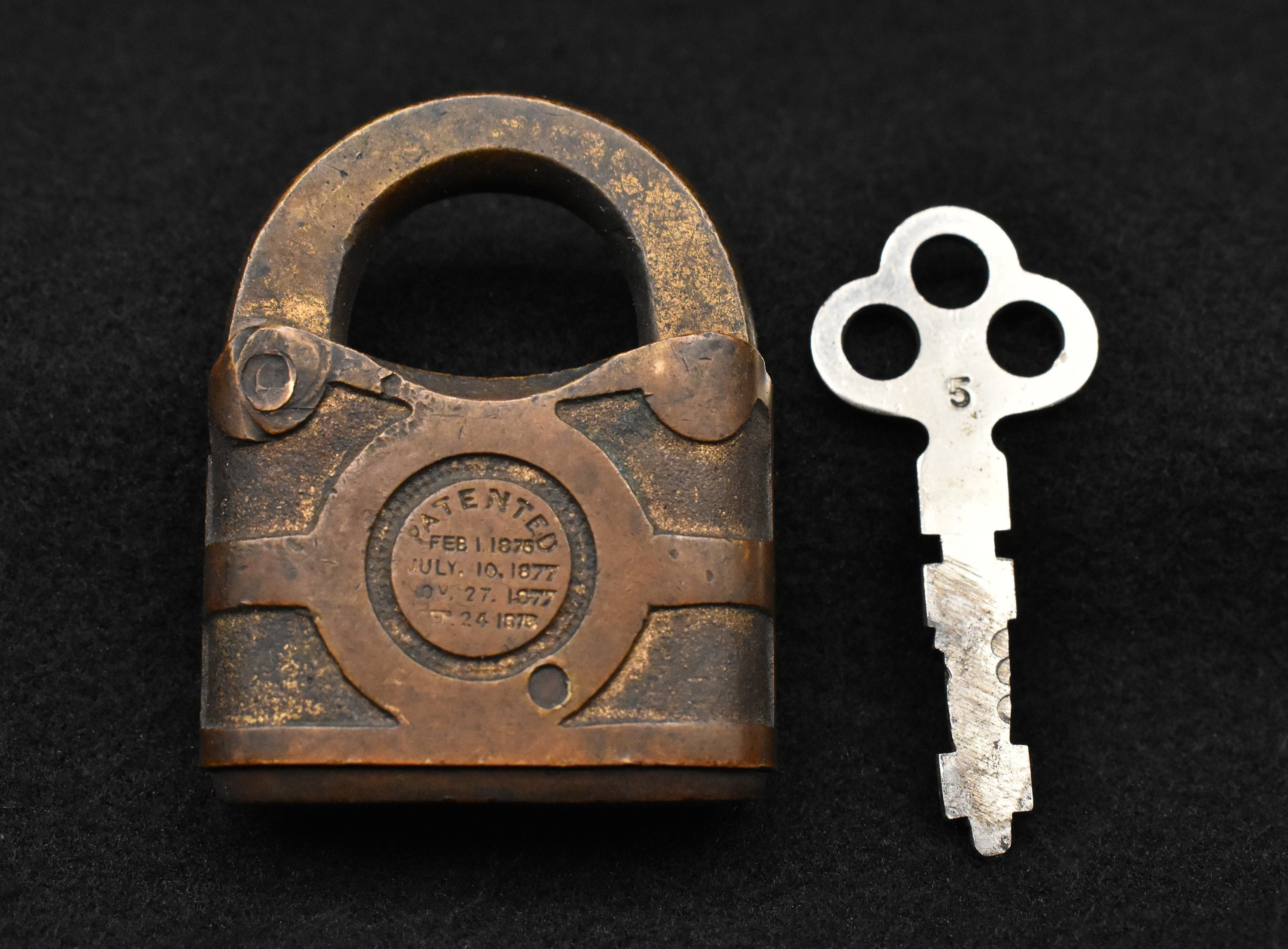

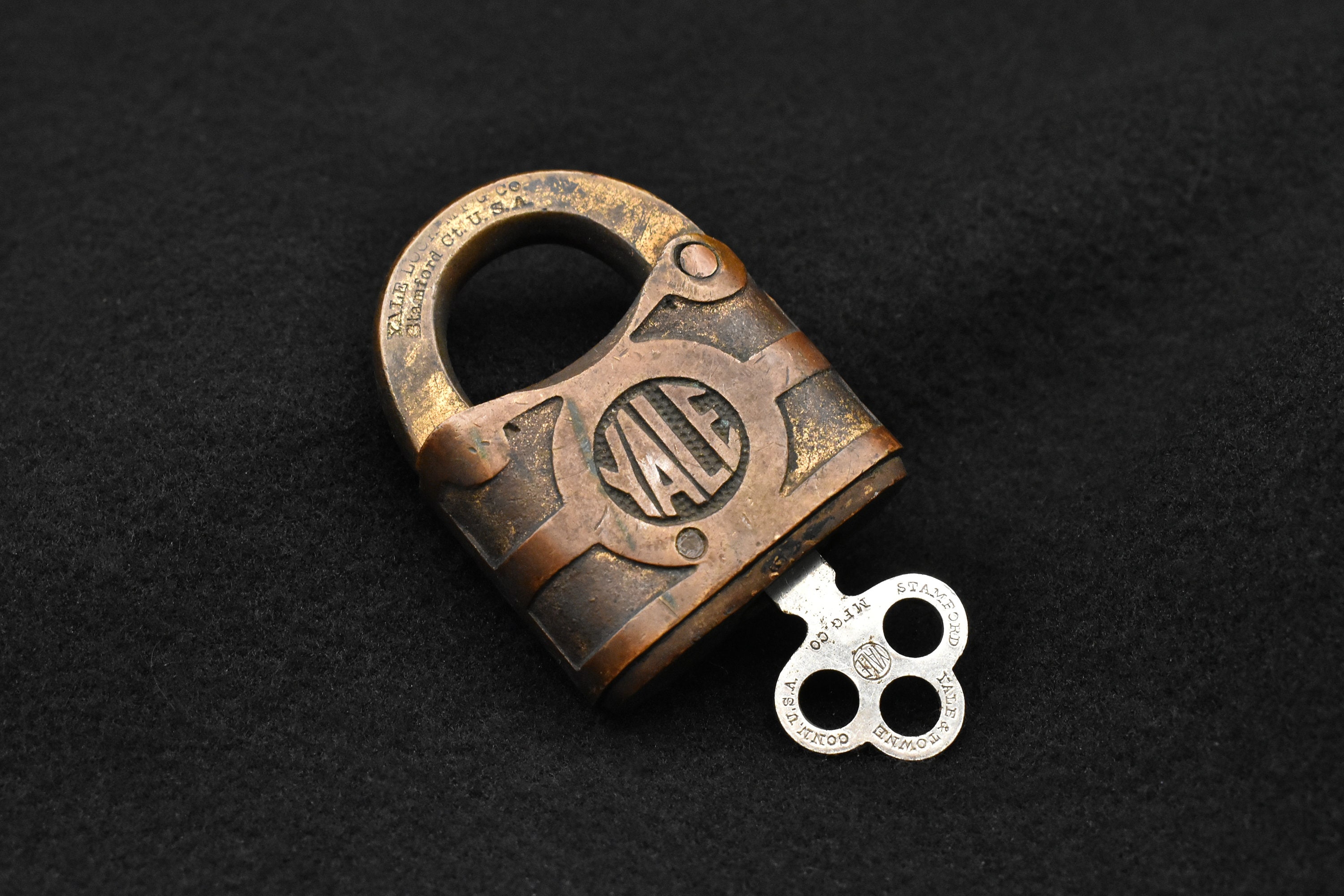
Antiques
Antique Bronze Yale Padlock - Very rare
-
DetailsYale is one of the oldest and most-respected lock manufacturers in the world. If you happen to be British, you'll recognize the name from virtually every home lock you can lay eyes on. As a British institution, Yale has a lengthy and significant history. However, many would be dismayed to learn that the company was actually started and shaped in the colonies - specifically, in the United States.
The Yale family does have roots in the UK - it was in the 1700s that the original Yale family immigrated to the United States from Northern Wales. There is a large gap in our knowledge of familial dealings in the 1700s, but around 1840, Linus Yale Sr. began designing and producing locks. He named his company the Yale Lock Manufacturing Co., based in Stamford, Connecticut. His designs were exceedingly secure and they was quickly adopted by the banking industry. He specialized in bank locks - from vaults to safety deposit boxes - and utilized a simple pin tumbler lock. However, the family had more hidden talents rising through the ranks. Linus Yale Jr. joined his father's company in the mid-1840s and in 1848, patented the spin cylinder tumbler lock (it's arguable whether Yale Sr. or Yale Jr. invented this mechanism - some argue that Jr. actually patented his father's design). Cylinder locks, with various modifications, are still one of our most common lock types for doors, gates and padlocks. Yale Jr. gained notoriety and expert status, and in 1862 he developed the Monitor Bank Lock which was the first to use combinations rather than keys. The same basic principles of these locks are used, even today. In 1865, Yale Jr. developed the invention that transformed the locksmith industry: The Yale Cylinder Lock. It is this design that provided accessible and reliable locks to the mass-market. Around this time, Yale Jr. met Henry Towne and combining their efforts, they re-branded the company Yale & Towne. They quickly applied for 8 patents, covering their pin tumbler safe lock, safe lock, bank lock, vault and safe door bolt and padlock. Their influence extends into the 20th century, with various impressive achievements. In the opening years of the British auto-making industry, the re-named Yale and Towne Manufacturing Company acquired a well-known lock manufacturer in Britain called H&T Vaughan, based in Willenhall, just outside of Birmingham. They were a very old British manufacturer and happened to be located right in the center of Britain's historic lock manufacturing center. With this purchase, Yale was now situated in the very center of the historical British lock-manufacturing mecca, exactly where they belonged. They continued their innovation and even managed to secure a relationship with Rolls Royce, supplying locks for their vehicles well into the 1980s. Today, they are known as the world leader in residential and commercial locks and continue to operate under corporate ownership.
This lock is exceedingly rare. It may look like a standard brass lock, but if we look a little closer, there's a slight bit of colour that tells a different story. In the 19th century, two materials were primarily used for padlocks - brass and bronze. The difference is significant. Brass is an alloy made of copper and tin. Bronze is similar, but made of an alloy of copper and zinc. Tin was significantly cheaper than zinc, so brass was frequently used for locks and was the preferred metal, at the time. It was cheaper, easily manufactured and significantly more malleable than brass, so it was no wonder that it was the preferred metal of 19th century industry. However, for nautical applications, situations where the lock would be exposed to the elements or for higher-security applications, bronze was used due to its remarkable resistance to corrosion and impact. You won't find many of these... in fact, many manufacturers didn't even bother with bronze due to the astronomical costs. Bronze locks were frequently four or five times more expensive than brass, so they quickly fell out of favour for all but the most demanding of applications. The colour of patinaed brass is easily recognized - it looks very much like faded gold. The yellow shade to the metal is a dead giveaway. With bronze, however, as it ages, it tends to darken to a slight shade of red or maroon. As well, as bronze ages, the metals tend to chemically separate on the surface, resulting in an obvious green element, where the denatured copper has started to oxidize. In several small places, we can actually see these telltale green spots, ever-so-slightly peeking from beneath the handsome patina. The lock and key are in stellar condition. I'm thoroughly impressed with this piece... it functions flawlessly - no small feat for a lock that is nearing 150 years old! The key is original and is inscribed "Yale & Towne, Stamford, Conn. USA," the company logo as well as a key number, "5," on the reverse. The lock itself has 4 patent dates inscribed directly on the lock body - from Feb. 1875 - Sept. 1878.
It would make a wonderful addition to any antique lock collection and is simply a beautiful piece of history. As always, should you have any comments or questions, we're always happy to respond to messages almost immediately.
Thank you for visiting C&K! -
Shipping & Policies
Shipping from Canada
Processing time
1-2 business days
Customs and import taxes
Buyers are responsible for any customs and import taxes that may apply. I'm not responsible for delays due to customs.
Payment Options
Returns & Exchanges
I gladly accept returns and exchanges
Just contact me within: 3 days of delivery
Ship items back to me within: 7 days of delivery
I don't accept cancellations
But please contact me if you have any problems with your order.
The following items can't be returned or exchanged
Because of the nature of these items, unless they arrive damaged or defective, I can't accept returns for:
- Custom or personalized orders
- Perishable products (like food or flowers)
- Digital downloads
- Intimate items (for health/hygiene reasons)
Conditions of return
Buyers are responsible for return shipping costs. If the item is not returned in its original condition, the buyer is responsible for any loss in value.
Frequently Asked Questions
Can I combine delivery on multiple items?
Of course! We'd be happy to assist. Just send us a quick message and we'll make sure to combine your items into a single package to reduce the shipping costs.
